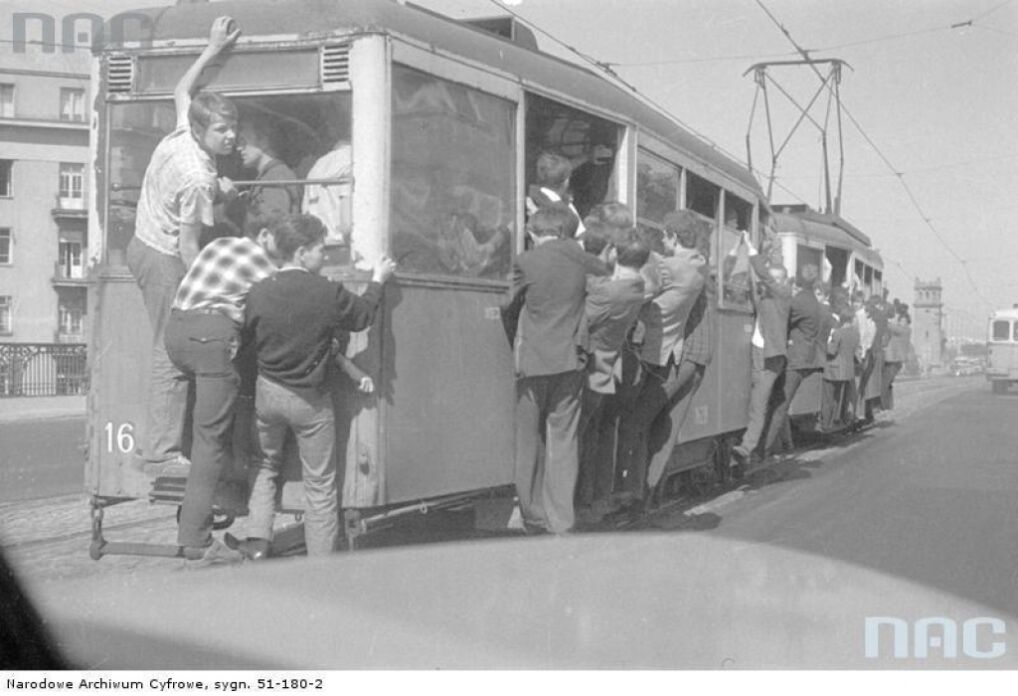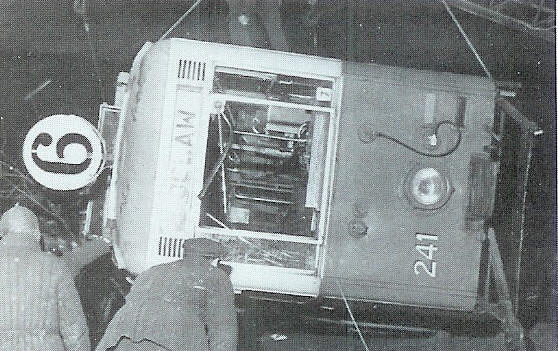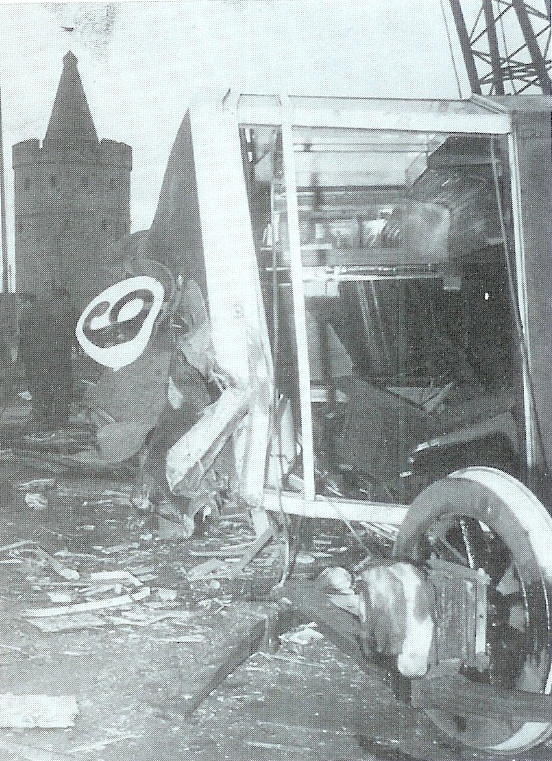|
|
Post by Bonobo on May 10, 2011 22:44:04 GMT 1
Warsaw remembers Kosciuszko plane crash
09.05.2011 09:13
Spot where plane went down in woods in south Warsaw
Twenty four years ago today, the LOT Polish Airlines passenger plane ‘Tadeusz Kosciuszko’ crashed into woods near Warsaw, after an engine explosion, killing all 183 people on board.
The captain, Zygmunt Pawlaczyk, who had thirty-two years of experience under his belt, maintained a collected, focused demeanour until the last.
His parting words were: “Bye, we're dying.”
The Tadeusz Kosciuszko, which took off from Warsaw on the morning of 9 May, 1987, was set to fly to New York. 155 Poles were on board, and 17 Americans.
However, 23 minutes after take-off, an explosion occurred, and the crew was compelled to attempt an emergency landing.
The pilot tried to return to Warsaw, but minutes before arrival, he lost control of the craft, which began a nosedive into the Kabacki Forest. There were no survivors, and at 183 people, the number of victims remains the largest air catastrophe in Polish aviation history.
The reasons for the crash were engine failure and loss of flight controls, according to the official Polish investigation.
With the Iron Curtain still in place, it was obligatory that all Polish planes were Russian, in this case an Ilyushin II-62M, and the crash prompted an intense stand-off between Polish and Russian aviation authorities, although this was not widely aired at the time.
The Poles held that there was a defective mechanism in the engine, resulting in high risk if not replaced after extended use.
The persistence of Polish investigators ultimately resulted in a series of construction improvements to the Russian model. Read the complete story: en.wikipedia.org/wiki/LOT_Polish_Airlines_Flight_5055[...]
According to the Polish investigatory commission, the cause of the crash was the disintegration of an engine shaft due to faulty bearings inside the number 2 engine, which seized, causing extensive heat. This in turn caused the consequent damage to engine number 1 (and its fire), rapid decompression of the hull, a fire in the cargo hold (which was not detected due to a damaged fire alarm system sensor)[citation needed], as well as the loss of elevator controls and progressive electrical failure.
The bearings concerned were roller bearings; each was designed to have 26 rollers inside, but because the supply of the rollers to the factory was delayed - while the bearings had to be finished on time due to expiring contracts - each bearing had only 13 rollers[...] 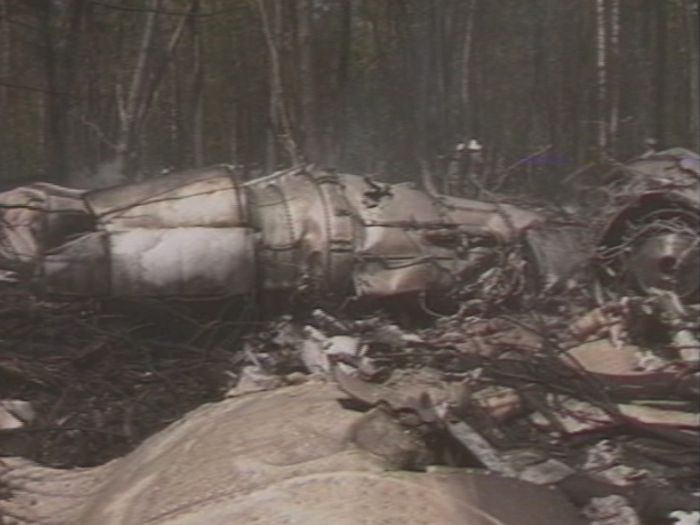 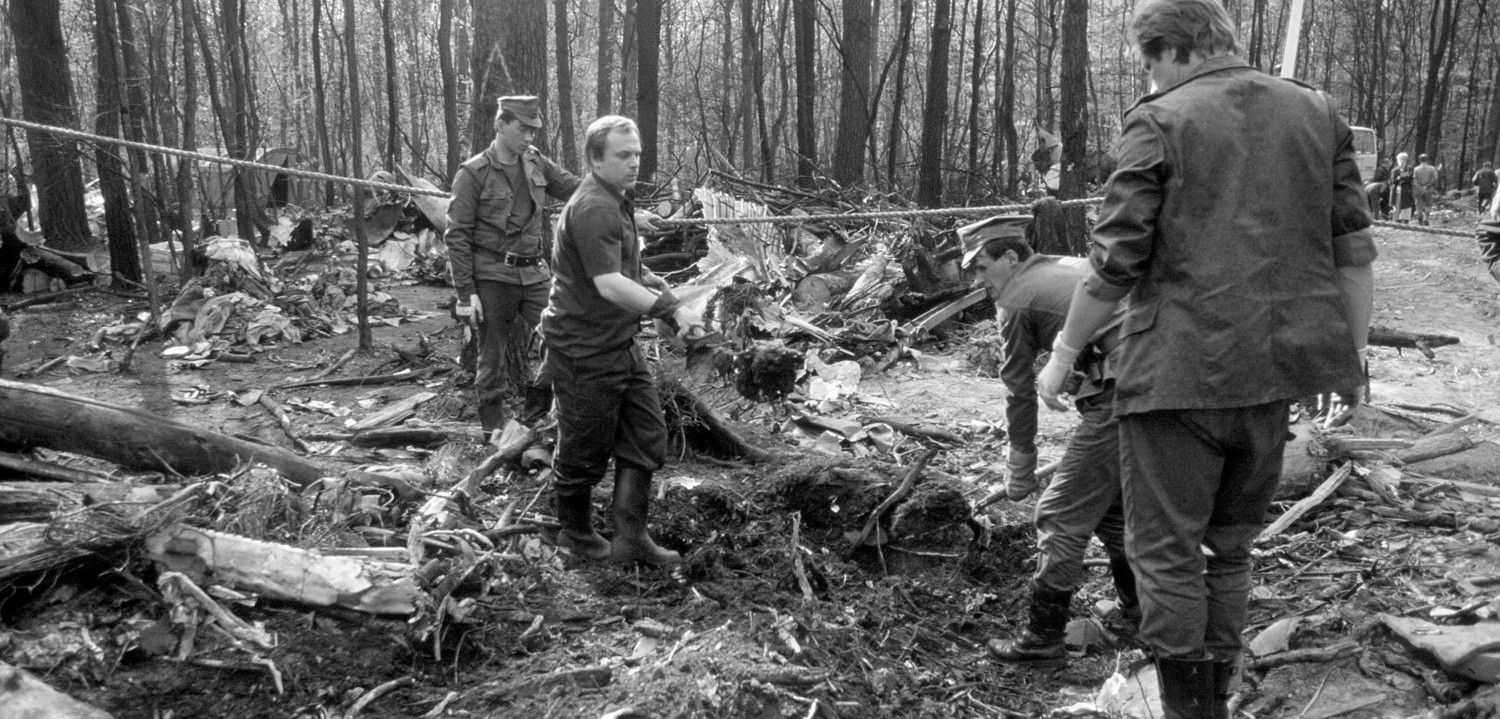  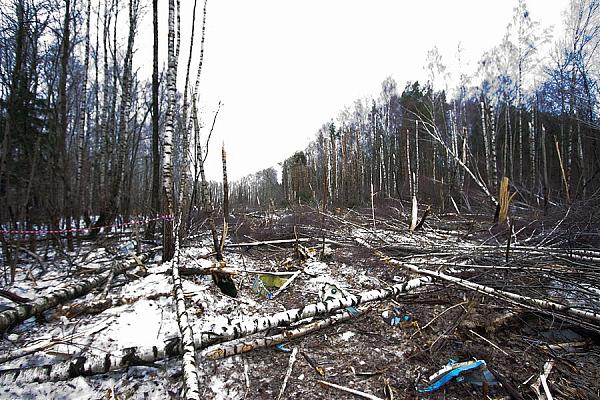
|
|
|
|
Post by Bonobo on Dec 28, 2017 22:48:14 GMT 1
|
|
|
|
Post by Bonobo on Apr 6, 2021 15:31:12 GMT 1
en.wikipedia.org/wiki/Poland_bus_disaster_of_1994
Poland's bus disaster of 1994 was a bus crash near Gdańsk involving a commuter bus PKS (Polska Komunikacja Samochodowa) that veered into a road-side tree. In the accident, 32 people died and 43 were injured.
Contents
1 Accident
2 Cause of accident
3 See also
4 Sources
Accident
The accident occurred on the afternoon of Monday, 2 May 1994. After a twenty-minute scheduled stop at a depot in Zawory, the bus – an Autosan H9-21 – began its return to Gdańsk with just two passengers. However, at the next scheduled stop in Chmielenek, several more people boarded the bus. Further along the route, large crowds of travelers boarded the vehicle at stops in Chmielno and in Kartuzy. At Żukowo, the driver acquiesced to the request of some travelers to make a stop. Finally, when the bus stopped in Leźno, an additional eight people boarded. By this time, the overcrowded vehicle was carrying 74 passengers, far in excess of the maximum allowable capacity of 51 (39 sitting, 12 standing).
32 kilometers after the start of its journey and 500 meters before its next scheduled stop in Gdańsk-Kokoszki, the overloaded bus veered off the road and crashed into a tree while attempting to pass a Jelcz truck. The force of the impact drove the tree 4,2 meters into the body of the bus. In the collision, 25 passengers died immediately, with five passengers dying shortly after while being transported to local hospitals (two of them before reached hospitals.) Two additional victims died five and six days after crash, respectively, while the driver, Jerzy Marczyński, survived.
Cause of accident
The court case was closed in 1999, after a one and a half year inquiry into the accident.
The immediate cause of the accident was found to be the explosion of the right front tire, with contributing causes given as:
Overcrowding on the bus (77 passengers instead of 51)
The excessive speed of the bus during the accident sequence (60 km/hour instead of 50 km/hour)
The generally poor condition of the 11-year-old bus 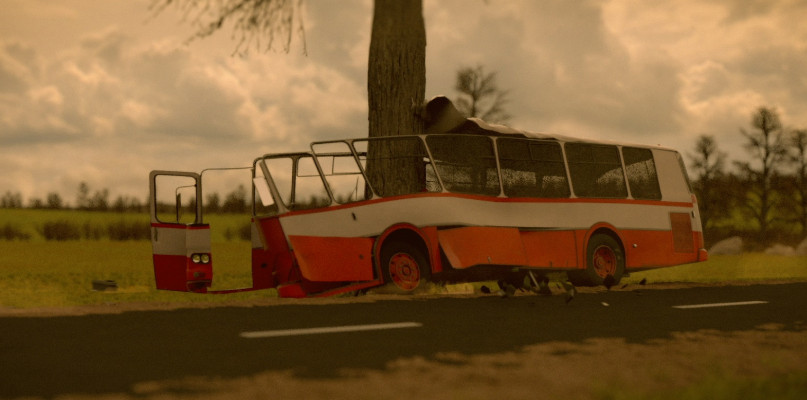 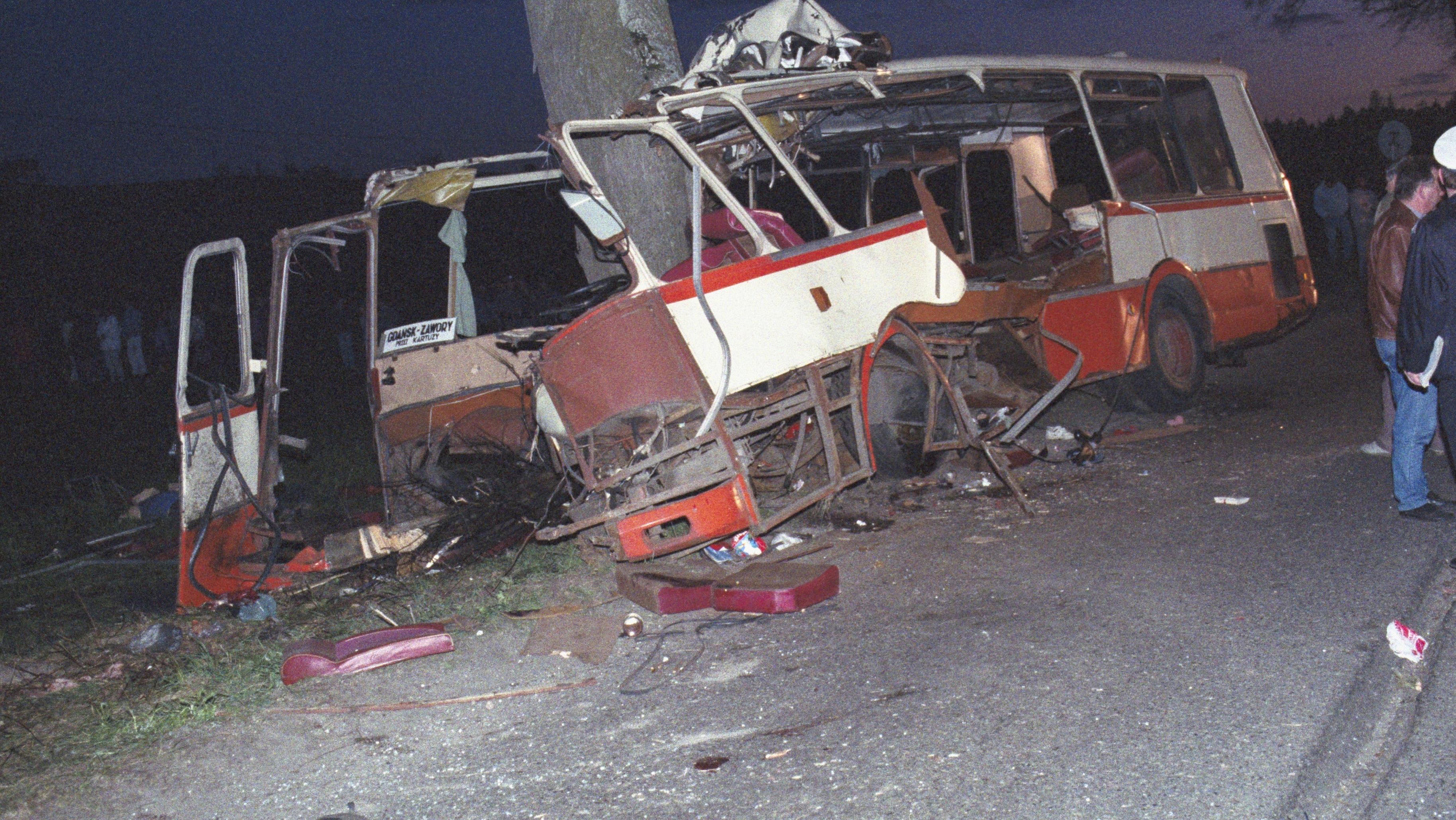 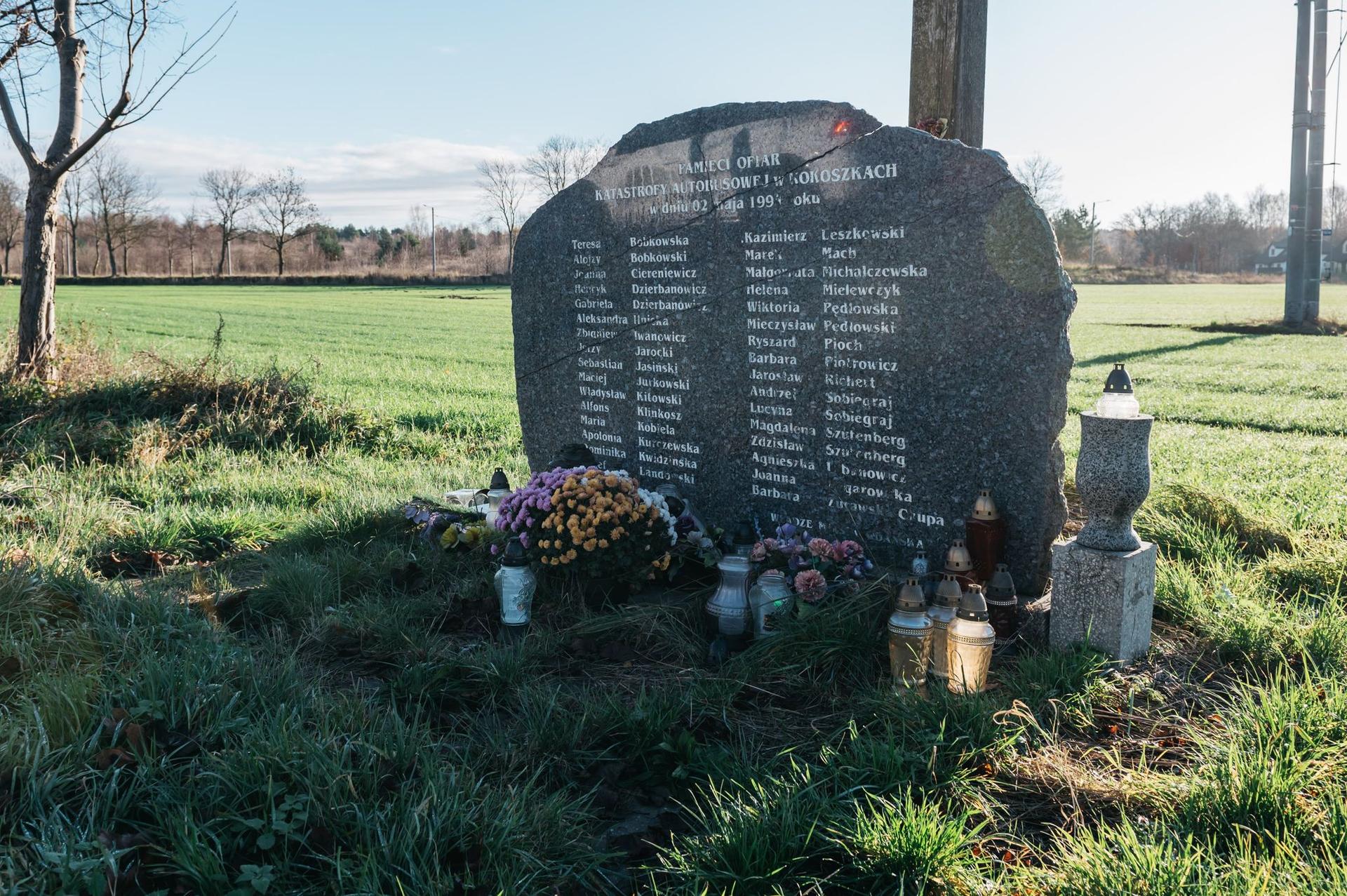 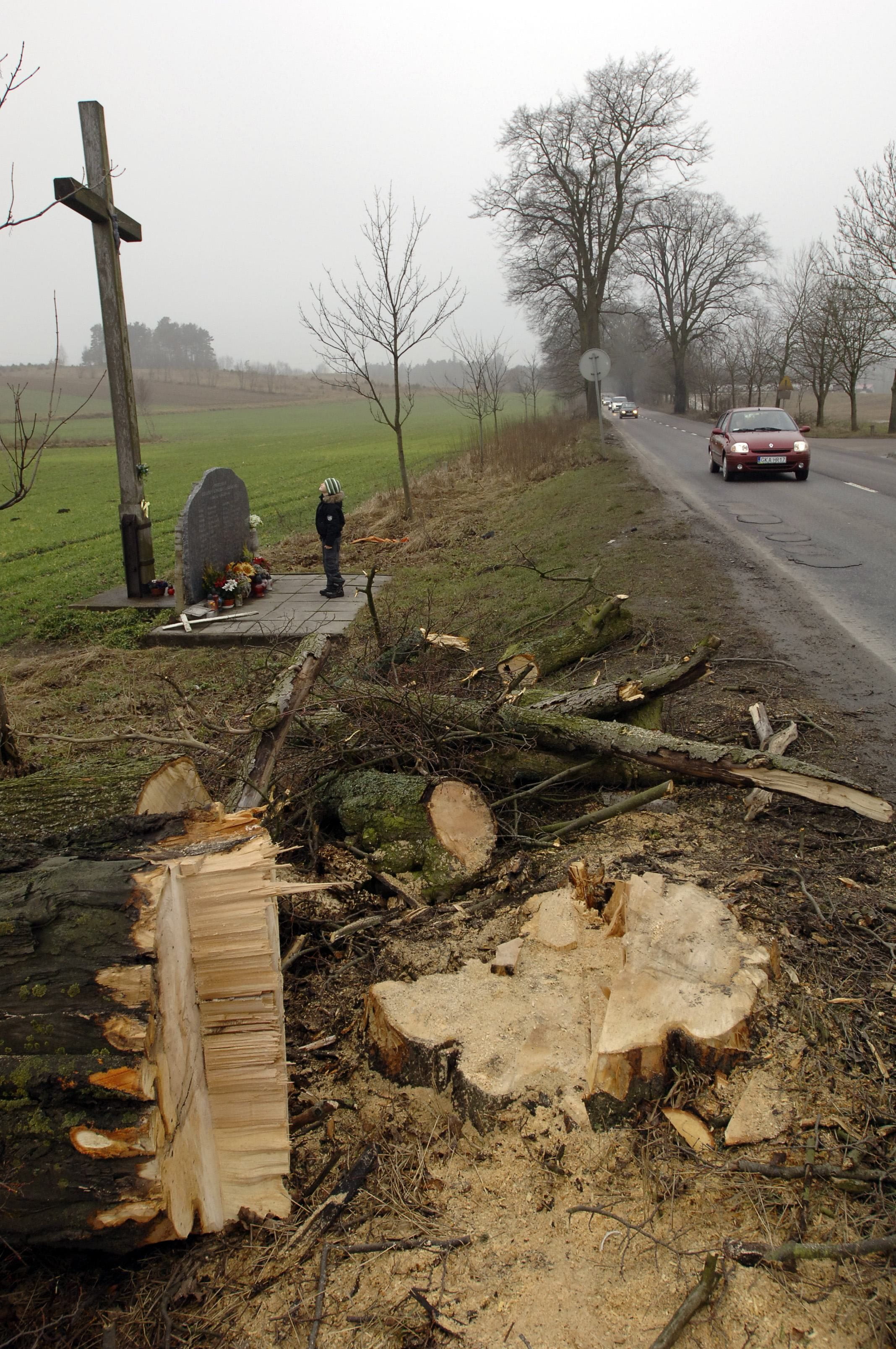
|
|
|
|
Post by Bonobo on Nov 26, 2021 22:57:53 GMT 1
www.rmf24.pl/news-zapomniana-tragedia-64-lata-temu-doszlo-do-wypadku-w-dlugiej,nId,5205245#crp_state=1
A forgotten tragedy. 64 years ago there was an accident in Długa Goślina near Poznań
Mateusz Chłystun
Saturday, May 1 (07:49)
It was supposed to be a trip full of fond memories. On May 1, 1957, a military delegation from Biedrusko came to the pedagogical high school in Rogoźno. The soldiers invited a group of girls to the unit, most probably for an evening fun. Together with them also a football team. The group set off for Poznań in the early afternoon by two trucks. Their journey, however, does not last long.
We were sitting in the back, there were wagons under a tarpaulin. We had no contact with the cab - recalls Czesław Pytlak, the youngest participant of the expedition. In 1957, he was 15 years old. He ended up in military Stara, because his older teammates called him. They were going to the military unit in Biedrusko to play football with the soldiers.
The departure was an initiative of the military who, the day before, after performances in the unit, took girls singing in the choir to Rogoźno. Wooden benches were placed on the floats, without any backs, not fastened. On the way, we stopped to take two girls to the car, and then we went on our way - Czesław Pytlak is explaining .
At one point, the teacher who was driving with the group was supposed to point out that the driver was driving too fast and carelessly. He appealed to the students to signal the driver, e.g. by knocking on the driver's window to slow down. The soldier behind the signal wheel, however, either did not hear or ignored it.
According to the memories of witnesses and according to press reports from 64 years ago - the driver could try to show off in front of one of the passengers sitting in his cabin. In 1957 Guest Niedzielny, who published an extensive account of the accident, it was written that Rados, who was driving the truck, was first to ask the girl to hold the steering wheel so that he could light a cigarette. When she disagreed, he started to lead his legs. In a subsequent investigation, he will admit to having drunk 125 grams of vodka before getting behind the wheel.
After driving less than 16 kilometers, the military Star 20 crashes on a tree in Długa Goślina. Three students and a soldier are killed on the spot. Another three girls will die in the hospital in nearby Oborniki Wielkopolskie.
"I can still see terrified youth"
It was a terrible sight - recalls Apoloniusz Twaróg, who came to the scene of the accident with his parents by accident, during a family trip on May Day. His father was one of the few who owned a private car. Before the ambulances even arrived, he started transporting the wounded to Oborniki.
People were terrified of what had happened, they did not know what to do, what to do. Then two or three ambulances arrived and turned between Długa Goślina and the hospital several times to transport the wounded. The sight was terrible. I still see these terrified youth and I remember sitting on this roadside ditch - he adds. Apoloniusz Twaróg was 6 years old then.
Three bodies lay on couches
The headmaster of the school, in the vicinity of which there was a tragic accident, joined the rescue operation. The dressing materials were, among others, tablecloths or sheets. The problem was also calling professional medical help. Obviously - there were no mobile phones, and there were only a few fixed-line phones for the entire commune. There was such a hand pump for water on the school playground. I remember that when I woke up, two soldiers tried to wash off the blood at this pump. I went over there too, my collarbone was broken and my shirt was covered in blood. When I looked around I realized what had happened, I remember that it was all preceded by one great shock - recalls the youngest participant of the trip, Czesław Pytlak.
I will not forget the sight when I woke up in the hospital with my friends. We noticed three bodies lying on couches covered with sheets. These were the girls who died in the hospital - he adds.
Investigation and sentence
After a few hours, the prosecutor reached the scene of the tragedy. It was the then chief military prosecutor, Col. Marian Fish. Investigators charged the driver of the car. Private Rados was sentenced to life imprisonment, but did not serve his entire sentence. He was released after an amnesty embraced him.
ADVERTISEMENT
It was terribly difficult for my mother. She did not come back often in her memories to that time - says Urszula Robakowska from Dziembówek, who lost her sister in an accident. I remember that my mother regretted going to the trial of this driver. She knew it wouldn't bring her daughter back to life anyway. People shouted at him that they wished him death. Mom later said that it cost her a lot , but that she did not understand how you can wish someone to die. I think that faith in God helped her a lot - explains Urszula Robakowska, sister of Helena Kruszyńska, who, as the current village head of Dziembówka, has a village chronicle at her house passed down from generation to generation.
There was an extensive entry from 1957, written in verse. Below there are archival photos and a school ID of Helena Kruszyńska.
A trace on a tree
A trace on a tree where a military truck crashed 64 years ago is still visible today. At the point of impact, the chestnut trunk is still bark free. In 2018, at the initiative of the inhabitants of Długa Goślina, a symbolic stone with a plaque with the names of the victims of the crash was placed at the site of the accident.
Place of the catastrophe today / Mateusz Chłystun / RMF FM
Crash site today/ Mateusz Chłystun / RMF FM
One of the originators of the commemoration of the victims of the tragic accident was Dariusz Wojcieszak, a resident of Długa Goślina . I have always heard about this story somewhere, and I have been living in Długa Goślina for 30 years. I knew the story mainly from the stories of my in-laws, but also of the village administrator. The victims of this tragedy were not commemorated in any way, so we raised the matter at the village council and, with the consent of the council, we unveiled this symbolic stone three years ago - he explains.
Two students of the Rogoziński high school survived the accident. Years later, the youngest participant of the crash - Czesław Pytlak, met with one of them at his workplace.
My aunt went to this school because she wanted to be a teacher. She died instantly. I was not yet in the world, I only know it all from stories, but I can imagine what the tragedy was - says Katarzyna Jankowiak, whose aunt Maria Mieraelak died in an accident in Długa Goślina.
Today I work alone at school. I look at my aunt's photo and I think to myself how beautiful she could have been - she adds.
Elaboration:
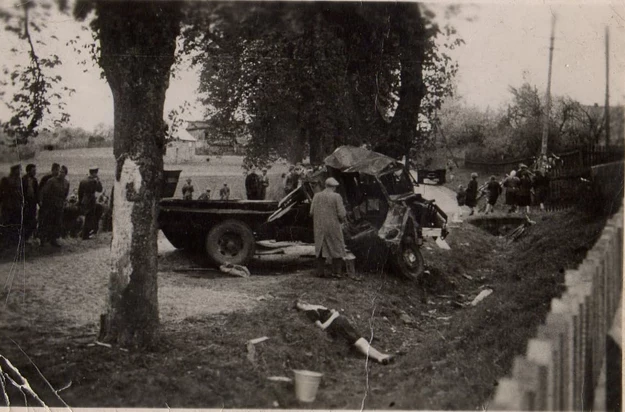 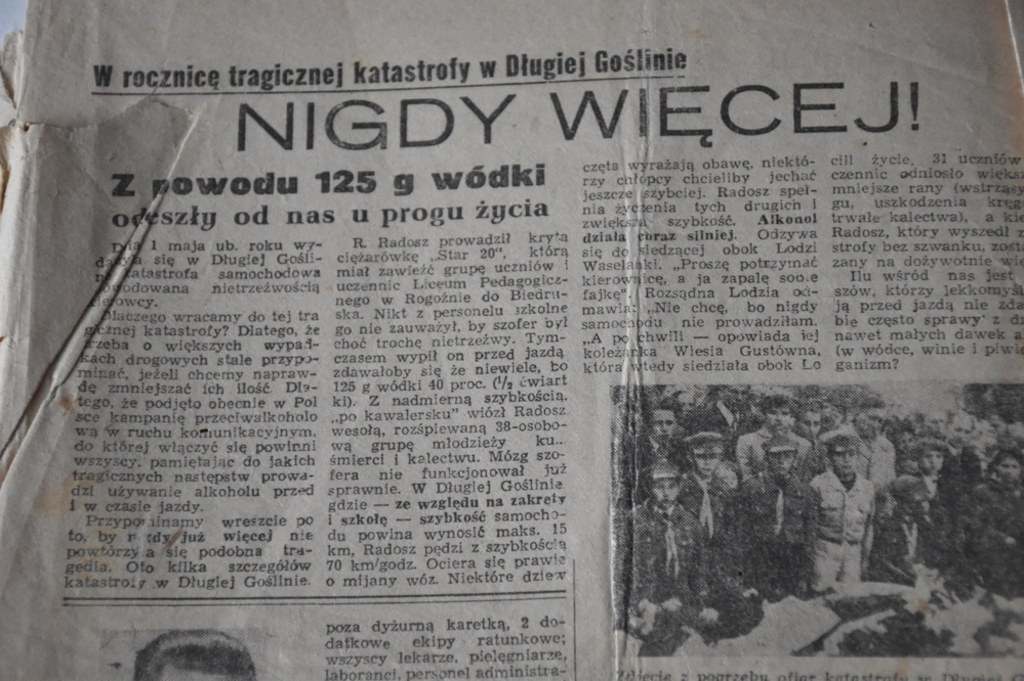 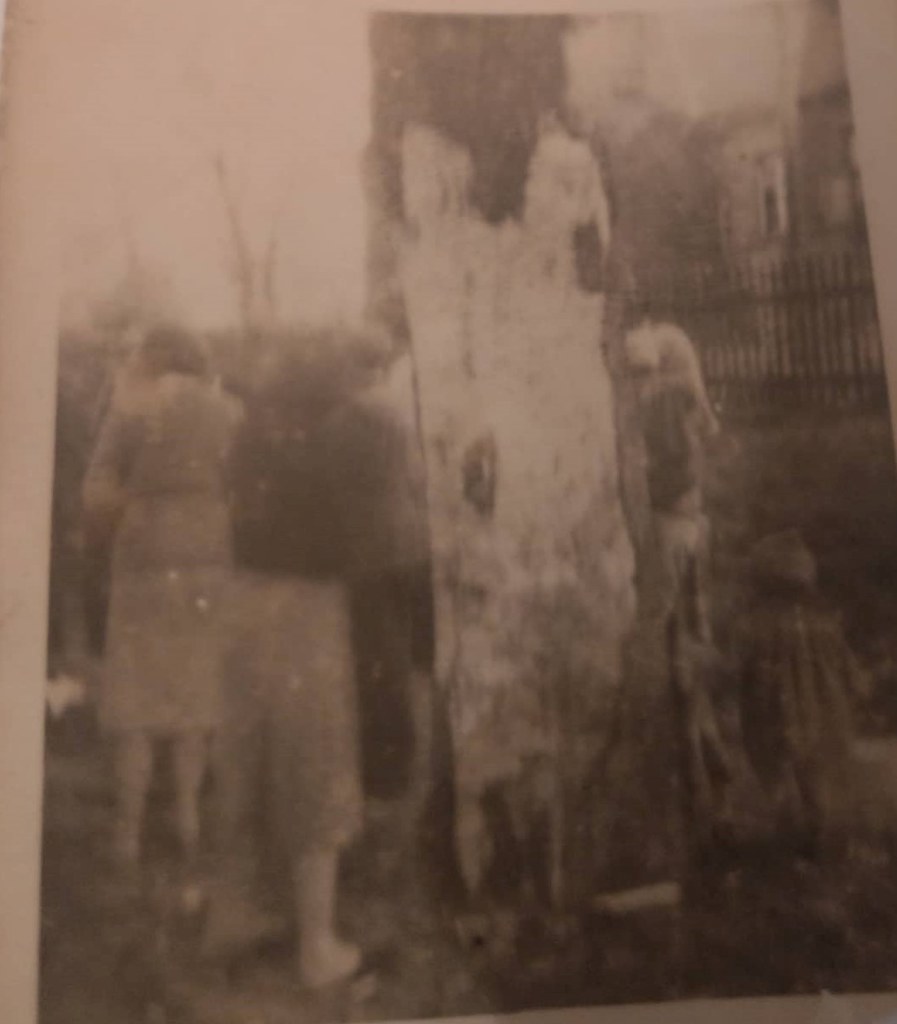
|
|
|
|
Post by Bonobo on Dec 31, 2021 13:32:50 GMT 1
They were going to the military unit in Biedrusko to play football with the soldiers. An army truck took part in another mass casualty accident in 1988 pl.wikipedia.org/wiki/Wypadek_ci%C4%99%C5%BCar%C3%B3wki_wojskowej_pod_Bytomiem_Odrza%C5%84skim
Accident of a military truck near Bytom Odrzańskie
A railway disaster with a military truck near Bytom Odrzańskie - a disaster in land traffic that happened on June 4, 1988 at the rail-road crossing on the railway line No. 273 near Bytom Odrzańskie . The military truck Star 66 [1] was hit by the train number 67413, driving at a speed of 100 km / h, driven by the EU07-378 locomotiveproduced in 1985 [2] [3] . As a result of the incident, 10 out of 13 soldiers of the 13th Mechanized Regiment from Kożuchów were killed.
The soldiers were going to work at the drainage ditches in the nearby village of Żukowice . A truck were brought 8 canisters with gasolinefor machines used by soldiers. On the day of the accident, the truck was driven by an inexperienced driver - the commander of the soldiers (he had previously agreed that the full-time driver should go to the so-called levee to his family in Bytom Odrzańskie). The passage (without barriers) was hardly visible from the road - it was obscured by bushes and traction poles. Most likely, the truck driver (who died in an accident) suggested that a train passed through the passage and did not think that another train could be going on the second track, so he entered at a speed of 70 km / h for the journey as soon as the first one passed him. train. Possible direct reasons for the truck not stopping:
ignoring the locomotive's sound signals by the driver, who may have thought they came from the train that passed the run;
poor technical condition of the truck, which delayed braking;
not sounding signals by the driver .
As a result of the collision, there was an explosion of gasoline transported in canisters - the resulting fire spread to the wreckage of a truck and a locomotive. 5 soldiers died on the spot, and the remaining 5 died in hospitals as a result of burns . Based on these events, the report entitled Przejazd was made, shot by the Film Studio of the Pomeranian Military District.
After this accident, the decision of the PKP Director General of July 21, 1988 ordered the fronts of the locomotives to be painted yellow, which was to improve the visibility of oncoming trains at level crossings. This regulation was officially repealed on February 27, 2002 [ footnote needed ] , but at the end of the 1990s it was abandoned due to the introduction of an obligation to drive locomotives with lights all day.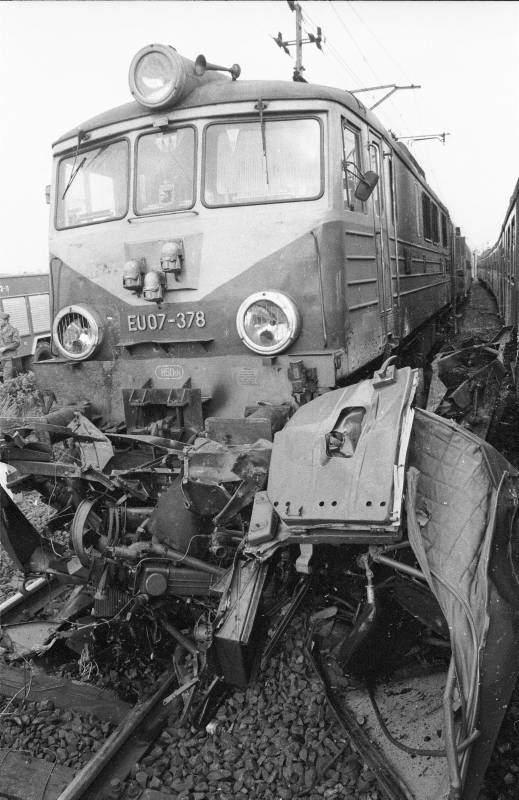  |
|
|
|
Post by Bonobo on Jan 4, 2022 17:20:16 GMT 1
en.wikipedia.org/wiki/LOT_Polish_Airlines_Flight_165
LOT Polish Airlines Flight LO 165 was an Antonov An-24 aircraft, registration SP-LTF, operating a scheduled passenger flight from Warsaw to Krakow Balice airport. It crashed into a mountain on 2 April 1969 at 16:08 local time (UTC+1) during a snowstorm. All 53 people (47 passengers and 6 crew) on board were killed.
Contents
1 Flight history
1.1 Introduction
1.2 Flight
2 Controversy
3 See also
4 References
5 External links
Flight history
Introduction
Much of the known information about the accident comes from two newspaper articles[1][2] published in 1994.[3] Their author wrote that, even 25 years after the accident, most documentation on the crash remained classified. Reports were based on the accounts of participants in the rescue action and some members of the accident investigation commission who asked for anonymity.
Flight
The aircraft took off at 15:20 local time for a 55-minute flight to Krakow's Balice Airport. The captain was Czesław Doliński.
At 15.49, the first officer received instructions to descend to 1,500 metres (4,900 ft) and get in touch with Balice control tower after passing Jędrzejów, less than 80 km north of Krakow. A military radar registered the aircraft at that time at 4,000 metres (13,000 ft) altitude. The pilots informed controllers in Okęcie and Balice when the plane had passed Jędrzejów VOR, but caused confusion by providing three different passage times a few minutes apart.[clarification needed] Shortly thereafter and before 16:00, the captain (who by then had taken over control) called Balice, gave his altitude as 3,700 metres (12,100 ft), received the local weather report, and then was instructed to descend to 1,200 metres (3,900 ft).
At 16:01, the aircraft was recorded at 2,400 metres (7,900 ft) and descending. In the next eight minutes, a series of radio exchanges took place between the aircraft and the Balice radar operator, with the captain repeatedly asking for his fix and reporting problems with the beacon signal, and the operator asking for the aircraft's position and altitude to help him find the aircraft on the radar screen. At 16:05, the aircraft was noted near Maków Podhalański, some 50 km past Krakow, at a height of 1,200 metres (3,900 ft). The last transmission received from the airplane was, "Left turn to further...-" at 16:08.17. Seconds after that, radio contact was lost. The plane subsequently crashed on the northern slope of Polica mountain, near Zawoja, southern Poland, at an altitude of 1,200 metres (3,900 ft).
Controversy
The official death toll of 53 remains controversial. The LOT manifest included 53 passengers and 5 crew members, but two days after the crash Polish press agencies published (based on LOT's information) 46 surnames (part of them without an address or name). Among the passengers were 49 Poles, 3 Americans, and a Briton.
The official accident report, published in 1970, blamed the accident on the captain becoming lost. No reasons were given as to why the aircraft, just before the crash, was flying at low altitude some 50 kilometres (31 mi) past its intended destination.
After the accident, the code 165 was still used by the airline. In 1978, the flight was hijacked by two women who are seeking political asylum in West Germany.    
|
|















